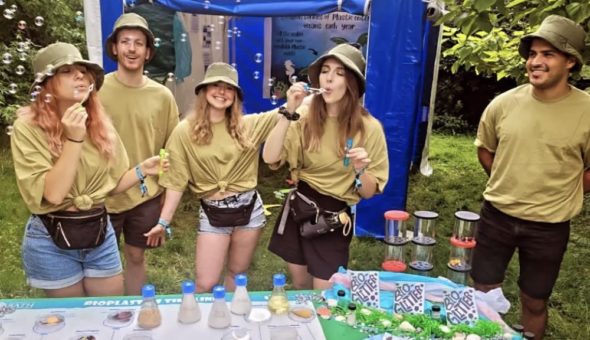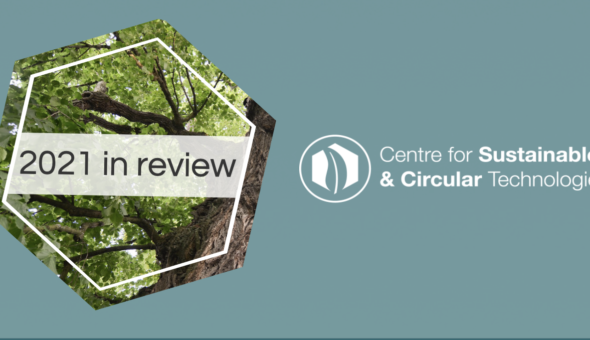At 9:30 on Friday morning, a quarter hour before the doors opened, there were already a crowd of excited children queueing outside. Nervous at the prospect of being ambushed by 1500 kids, we put the finishing touches on our ocean plastic themed stands. We had settled on this topic due to the increased public awareness of ocean plastics reflected in recent news articles, and the significant CSCT research dedicated to biobased plastics, biodegradable materials and water quality. We decided to offer four separate activities; Microplastics, Fate of Plastics, Ocean Clean-Up and Coffee.
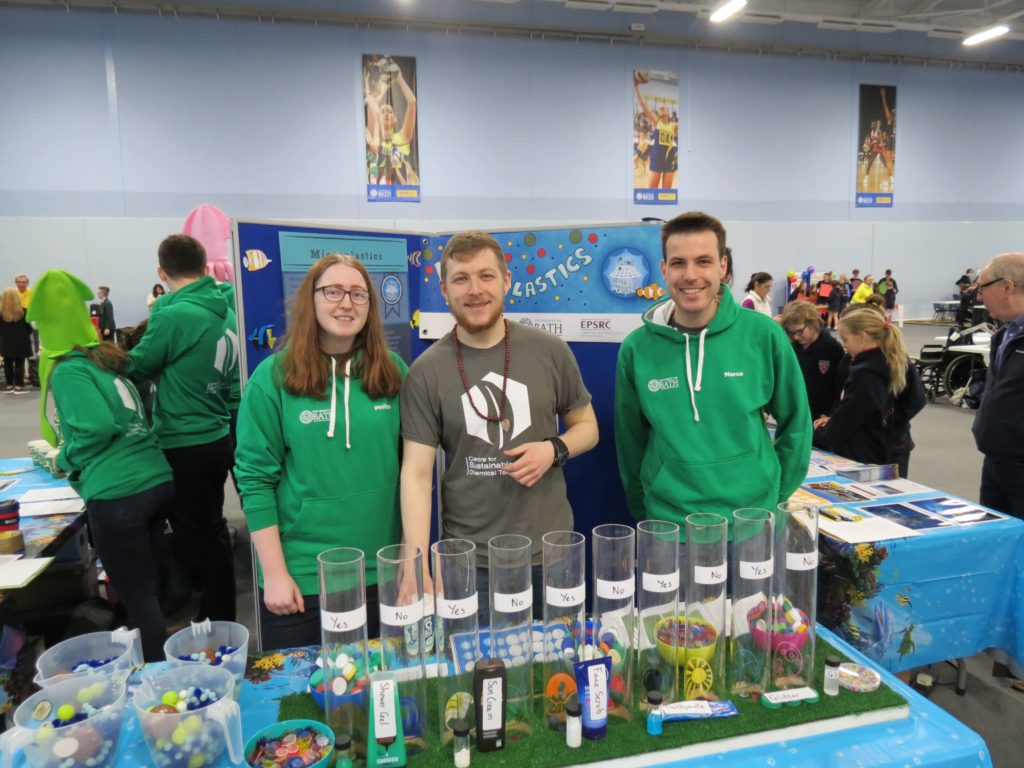
Microplastics
This table was separated into two parts. Firstly, we asked the public to vote on which common household products might contain microplastics - from toothpaste, shower gel, suncream, face scrub and glitter. The big reveal was that they all contained microplastics. Appropriately, a news story had broken that very morning about the presence of microplastics in bottled water, due to the difficulty in removing such small particles by filtration. To demonstrate this, we asked the kids to tip a jug of different sized balls through a series of nets. The larger balls were caught by nets with larger holes, whereas the smallest balls – representing microplastics – managed to fall to the bottom without being removed.
This stand was inspired by Professor Janet Scott’s research based on biodegradable microbeads from cellulose. Such a solution would effectively halt the accumulation of microplastics from microbeads in personal care products in the water supply.
Fate of Plastics
This stand was inspired by a recent research article about the fate of all plastics. In 2015, of 6300 million tonnes of plastic waste, only 9% was recycled, 12% was incinerated, 79% was sent to landfill and less than 1% was biodegraded*. To portray this, we made a bagatelle/ pinball game with four pockets the marble could land in. These represented the four fates of plastic - with the size of each pocket weighted to represent the likelihood of each fate.
The aim of this activity was to not only raise awareness of the need to recycle and to avoid unnecessary plastic waste, but also to promote the research conducted by researchers at the CSCT into biodegradable and bio-based plastics.
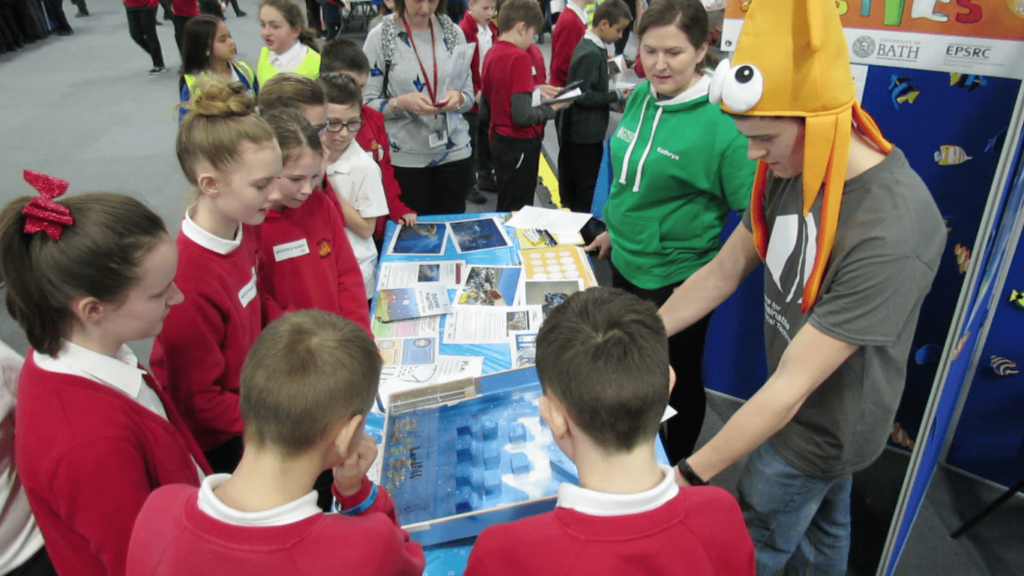
Ocean Clean-Up
This activity was based on ongoing research in the CSCT to detect and remove toxins from water. These toxins can include pharmaceuticals or chemicals such as BPA (bisphenol-A), which leach into our oceans from plastic litter. We created a computer game based on Snake; using either a dance-mat or a controller, you move a robot around the screen to collect harmful chemicals (represented by a skull and crossbones) - if you collide with the screen boundary or your growing tail, it's game over!
Coffee
This stand was aimed at parents and teachers - the concept was simple, to offer people free tea and coffee and to have a conversation about sustainability. This related to the CSCT research led by Dr Chris Chuck, who is conducting research into deriving value-added products from waste coffee grounds. These can be used as precursors to pharmaceuticals, for carbon capture and water purification. Oil extracted from the grounds can be converted into biodiesel - all of the world's coffee waste could provide enough fuel to run 4000 cars every year!
After a busy two days and over 600 visitors to each stand, everybody came away with a sense of accomplishment. Although the snow and cold weather on Saturday meant that turn-out was less than we expected, being located by the heater and offering free hot drinks certainly helped attract an audience! It was extremely rewarding to see how well people engaged with our activities. It was extremely encouraging to see how enthusiastic a new generation of children were about sustainability. Kids were very excited to have their plastic be biodegraded or recycled in the Fate of Plastics game, and many had been learning about microplastics at school. The Coffee stand was also surprisingly popular with children and many were fascinated to learn about how fuel could be seemingly created from rubbish.
Overall, I think the festival went as well as we could have expected and I am looking forward to the same again (hopefully with better weather) for the Festival of Nature in June.
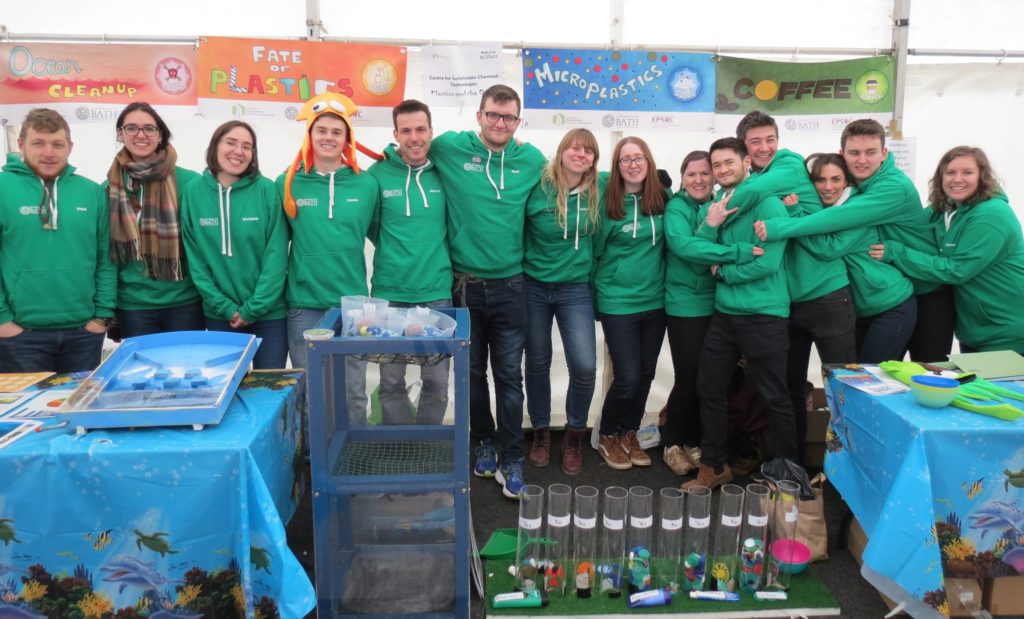
* R. Geyer, J. R. Jambeck and K. L. Law, Science Advances, 2017, 3.
Respond
